Why Use Honey in Cakes?
Honey contains a variety of vitamins and minerals, making it a natural sweetener with benefits beyond taste.”
— Dr. Eric Berg, Chiropractor and Health Educator

Did you know honey isn’t just a natural sweetener; it also brings unique flavors and health benefits to your desserts? Honey’s subtle floral notes and natural richness create a depth of flavor that’s perfect for cakes, and it comes with added health benefits. Whether you’re baking for a special occasion or just a cozy night at home, honey cakes are a delicious way to enjoy something sweet while feeling good about what’s on your plate.
Honey offers natural antioxidants, vitamins, and minerals that aren’t found in refined sugar, making it a wellness-friendly alternative in baking. Studies show that honey has antimicrobial and anti-inflammatory properties, which can help boost your immune system, soothe your throat, and even aid digestion. This is why many health-conscious bakers are switching to honey in their dessert recipes—it’s both flavorful and good for you!
Health Benefits of Honey for Baking
- Nutrient-Rich: Unlike sugar, honey contains small amounts of vitamins like B6, niacin, and minerals like calcium and magnesium, supporting overall health.
- Low Glycemic Impact: Honey has a lower glycemic index than refined sugars, meaning it doesn’t spike blood sugar as sharply. This makes it a gentler option for those managing blood sugar levels.
- Natural Preservative: Honey acts as a natural preservative, extending the shelf life of baked goods by retaining moisture and freshness.
- Antioxidant Power: The antioxidants in honey help fight free radicals, which may reduce inflammation and promote overall wellness.
The antioxidants in honey help combat oxidative stress, which may support overall health and reduce inflammation.” — Natural Heart Doctor
Curious about more benefits of honey? Check out our Health Benefits of Honey article to dive deeper into the science behind this amazing natural ingredient.
With these advantages, honey becomes more than just a sugar substitute—it’s a powerhouse ingredient that adds both taste and wellness benefits to your baking. Whether you’re a seasoned baker or just getting started, honey cakes bring together the best of flavor and nutrition. Ready to explore some recipes? Let’s dive in!
1. Essential Honey Cake Recipes for Every Baker
Ready to try some delicious honey cake recipes? Here’s where we dive into a variety of options that are simple, unique, and, of course, incredibly tasty. Whether you’re looking for an easy recipe to whip up on a weeknight or something special for an upcoming celebration, there’s a honey cake here for you.
Classic Honey Cake Recipe
Let’s start with a go-to classic that’s easy for beginners and loved by everyone. This cake is fluffy, moist, and has that signature golden color that comes from pure honey.
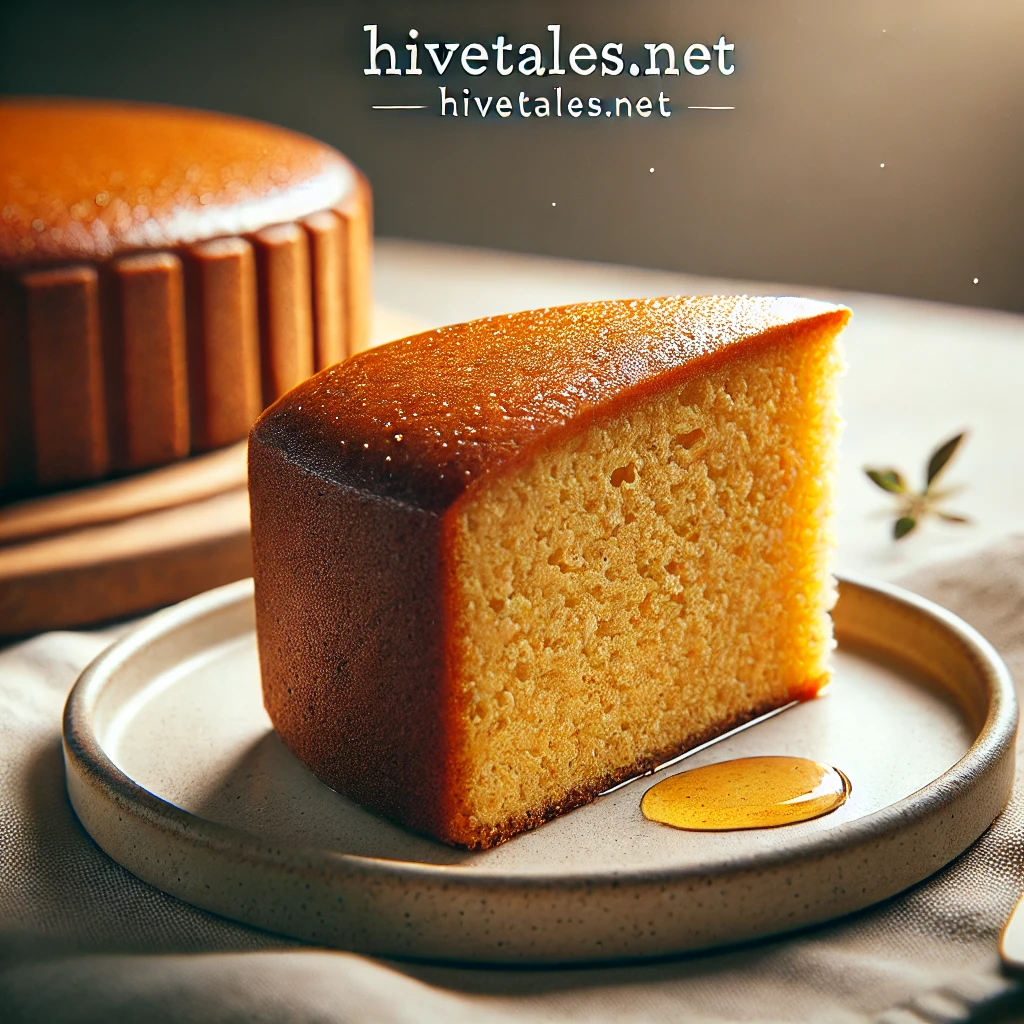
Ingredients:
- 1 cup honey
- 1 cup all-purpose flour
- 2 large eggs
- 1/2 cup olive oil or butter
- 1/2 cup warm water
- 1 tsp baking powder
- Pinch of salt
- Optional: A dash of cinnamon or vanilla for extra flavor
Instructions:
- Preheat your oven to 350°F (175°C). Grease a loaf pan or round cake pan.
- In a large bowl, mix the honey and oil (or butter) until smooth.
- Add eggs one at a time, beating well after each addition.
- Combine the dry ingredients in a separate bowl, then add to the wet mixture.
- Gradually add warm water to make a smooth batter.
- Pour into the prepared pan and bake for 30-35 minutes, or until a toothpick comes out clean.
Tip: For a little extra sweetness, drizzle some honey over the top while the cake is still warm!
Easy Honey Cake Recipe for Busy Days

If you’re short on time but still want a taste of honey goodness, this recipe is a quick solution with minimal ingredients.
- Ingredients: Honey, flour, eggs, and baking powder.
- Cook Time: 20-25 minutes in a muffin tray to create bite-sized honey cakes.
This recipe keeps things straightforward and can easily be adapted to make honey cupcakes or even mini muffins for a party.
Healthy Honey Cake with Whole Wheat
Want a healthier version? This recipe swaps all-purpose flour for whole wheat and includes a mix of nuts for added texture.
- Ingredients: Whole wheat flour, honey, olive oil, eggs, and a pinch of nutmeg.
- Instructions: Similar to the classic version, but with whole wheat flour for added fiber and nutrients.
Healthy honey cakes can be a hit for brunches or a midday snack that’s satisfying and nutritious.
Unique Twists: Honey Almond Cake and Honey Spiced Cake
For those looking to experiment, try adding almonds, cinnamon, or a pinch of cardamom to your honey cake. Almonds add a nice crunch, while spices like cinnamon or cardamom create a warm, aromatic flavor perfect for cozy gatherings.
Frequently Asked Recipe Questions
- What makes a honey cake unique? Honey adds moisture, a natural sweetness, and a golden color that’s hard to achieve with sugar alone.
- Can I customize these recipes? Absolutely! Swap flour types, add spices, or top with fruits and nuts to make it your own.
Curious about pairing options for honey cakes? Check out our Drinks with Honey article for some perfect matches!
2. Honey Cake Recipes for Special Occasions
Honey cake is perfect for making any celebration feel extra special. Whether you’re planning a family gathering, holiday feast, or even a wedding, there’s a honey cake to suit the occasion. Let’s explore a few options that add warmth and sweetness to memorable moments.
Holiday Honey Cake: A Festive Tradition
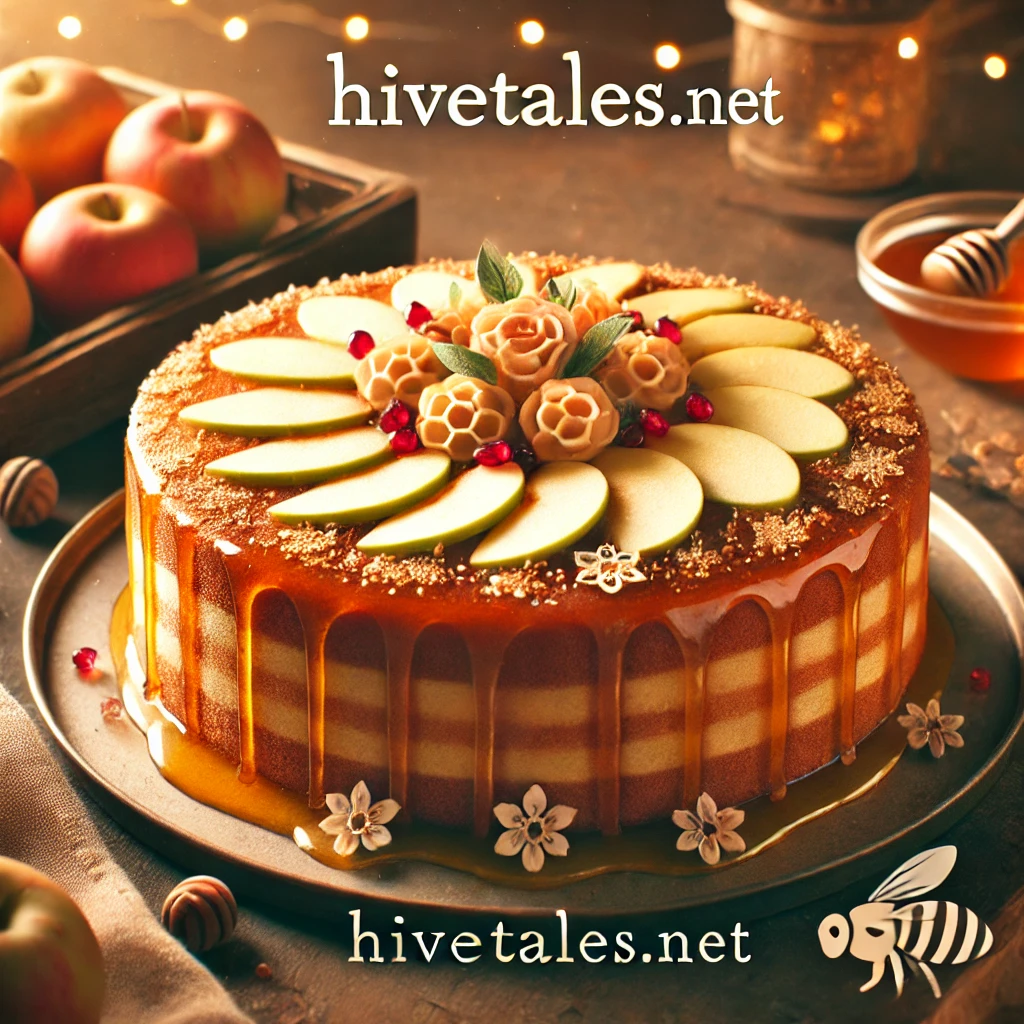
For many, honey cake is a staple during Rosh Hashanah, symbolizing the hope for a “sweet” New Year. This recipe embraces traditional flavors with a modern twist, adding apples or pomegranates for a refreshing touch.
- Ingredients: Honey, apples or pomegranate seeds, cinnamon, and a hint of orange zest.
- Why it’s special: This cake combines the natural sweetness of honey with festive spices and fruit, adding vibrant flavors and textures.
Serving Tip: Garnish with a few apple slices or pomegranate seeds for a pop of color and extra holiday flair!
Birthday Honey Cake with a Twist
Make birthdays sweeter with a layered honey cake! Soft layers of honey-infused sponge with light whipped cream make for a cake that’s beautiful and satisfying.
- Pro Tip: Customize this cake with the birthday person’s favorite flavors, such as a touch of cocoa, a nut topping, or fresh berries between the layers.
Suggested Customization: Try drizzling melted dark chocolate or a sprinkle of crushed nuts between layers for added crunch and flavor.
Elegant Honey Almond Cake for Weddings or Anniversaries
Looking for a cake that’s both simple and sophisticated? An almond honey cake makes a beautiful choice for weddings, anniversaries, or other formal celebrations. With its subtle almond flavor and honey sweetness, it feels both classic and elegant.
- Ingredients: Almond flour, honey, eggs, vanilla extract, and almond slivers for decoration.
- Why it’s perfect: The almond flour creates a dense, rich texture, and honey adds a golden finish that looks stunning on any dessert table.
Decorating Tip: Top with edible flowers or gold leaf to make this cake visually stunning for special events.
Potluck-Friendly Honey Sheet Cake
For a more casual celebration or potluck, a honey sheet cake is a crowd-pleaser that’s easy to make and share. It’s a simple recipe that doesn’t skimp on flavor, and the sheet cake format makes it easy to slice and serve.
- Ingredients: Honey, flour, milk, butter, and a pinch of cinnamon.
- Why it’s practical: Sheet cakes are easy to transport and serve, and the recipe can be scaled up or down depending on the crowd size.
Quick Serving Idea: Dust the top with powdered sugar, or drizzle a bit of extra honey for a quick and easy finishing touch.
Tips for Adapting Honey Cakes for Any Celebration
- Need an allergy-friendly option? Swap traditional flour with almond or oat flour to make it gluten-free.
- Prefer a richer flavor? Add spices like nutmeg, ginger, or cloves to deepen the cake’s taste, especially for fall or winter occasions.
Thinking of trying these honey cakes for your next celebration? Let us know which recipe you picked, and check out our other honey-based dessert ideas in the Honey Desserts section!
Honey cake is versatile, delicious, and perfect for creating sweet memories on any special occasion. Try one of these recipes and bring a unique touch to your next gathering.
3. Tips and Techniques for Baking with Honey
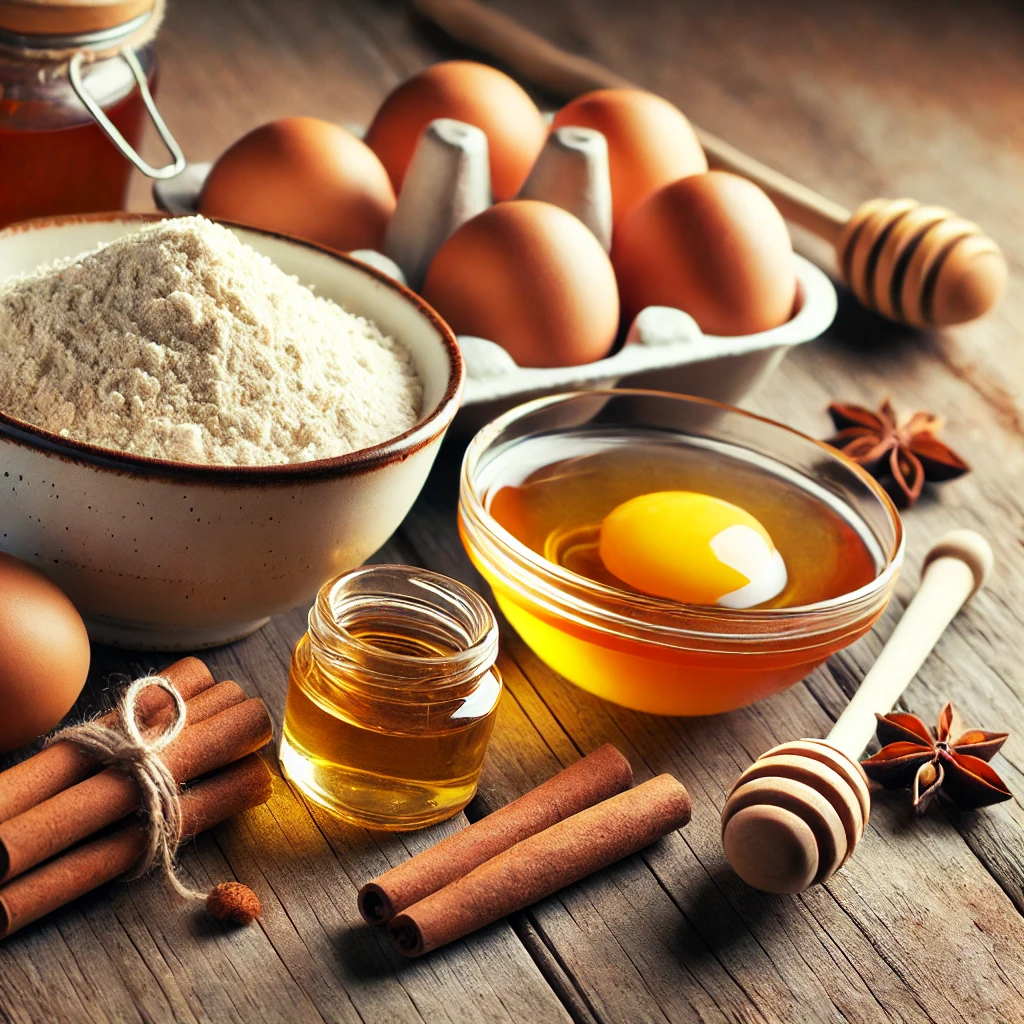
If you’re new to baking with honey or just looking for ways to enhance your honey cake, these tips will help you make the most of this natural ingredient. From choosing the best honey to adding your favorite spices, these techniques will ensure your cake turns out just right every time.
Using whole, natural ingredients in baking isn’t just about flavor—it’s about nourishing the body and the mind.” — Mindbodygreen
Selecting the Right Honey
Not all honey is the same, and different varieties can change the flavor of your cake. Here’s a quick guide:
- Light Honey (like clover): Mild and sweet, perfect for those who prefer a subtle honey flavor.
- Dark Honey (like buckwheat): Rich and robust, adding a deeper, slightly molasses-like flavor that works well with spices.
Pro Tip: Experiment with different honey types to find your favorite, or combine two varieties for a unique taste!
How to Make a Honey Cake Moist and Flavorful
Honey is naturally hydrating, helping to keep cakes moist, but here are a few tips to enhance that effect:
- Use olive oil or butter: These fats add richness and moisture, balancing honey’s sweetness.
- Don’t overbake: Honey browns faster than sugar, so keep an eye on your cake to prevent it from drying out.
- Add a bit of fruit: Applesauce or mashed bananas can add both moisture and natural sweetness to the cake.
Did You Know? Honey is also a natural humectant, meaning it attracts moisture from the air. This quality helps keep your cake soft even after a few days!
Common Honey Cake Substitutions and Adjustments
Sometimes, you may need to make adjustments based on dietary needs or ingredient availability. Here are some quick swaps:
- Sugar Substitute: To replace sugar with honey, reduce the amount slightly (use 3/4 cup of honey for every 1 cup of sugar) and decrease other liquids in the recipe by about 1/4 cup.
- Egg-Free Option: Replace eggs with unsweetened applesauce or yogurt to keep the cake moist without eggs.
- Butter-Free Option: Use olive oil or coconut oil in place of butter for a dairy-free version with a bit of added flavor.
Flavor Boosters: Spices, Nuts, and Fruits
Honey pairs beautifully with a range of spices and add-ins. Here are some popular choices:
- Spices: Cinnamon, ginger, and nutmeg add warmth and depth, especially for fall and winter cakes.
- Nuts: Walnuts, almonds, and pecans add texture and a nutty flavor that complements honey’s sweetness.
- Fruits: Fresh apples, dried apricots, or dates can add a bit of chewiness and a burst of natural sweetness.
Quick Flavor Tip: Adding a pinch of salt to your batter enhances the honey’s sweetness, making each bite even more satisfying.
Adjusting Baking Time and Temperature for Honey Cakes
Because honey browns quickly, baking with it requires slight adjustments to avoid over-browning:
- Lower the temperature: Reduce the oven temperature by 25°F compared to recipes that use sugar.
- Use parchment paper: Lining the baking pan helps prevent the cake from sticking and makes it easier to remove once cooled.
Frosting Tips for Honey Cakes
Honey cakes are delicious on their own, but if you’re a frosting fan, here are a few ideas:
- Cream Cheese Frosting: The tanginess of cream cheese balances honey’s sweetness.
- Honey Whipped Cream: Light and airy, whipped cream sweetened with a bit of honey makes a perfect topping.
- Nut Butter Drizzle: For a richer finish, drizzle a bit of almond or peanut butter over the top.
Troubleshooting Common Honey Baking Issues
- Cake too dense? Make sure to sift the dry ingredients to prevent heavy batter and avoid overmixing.
- Cake over-browned? Try tenting the top with foil during the last 10 minutes of baking.
Baking with honey is all about experimenting and finding what you love best. Try these tips to make your honey cakes even more flavorful and enjoyable!
4. Storing and Serving Honey Cakes
Once you’ve baked the perfect honey cake, keeping it fresh and serving it at its best are the final steps. Here’s how to store, freeze, and serve your honey cake for maximum flavor and enjoyment.
How to Store Honey Cake
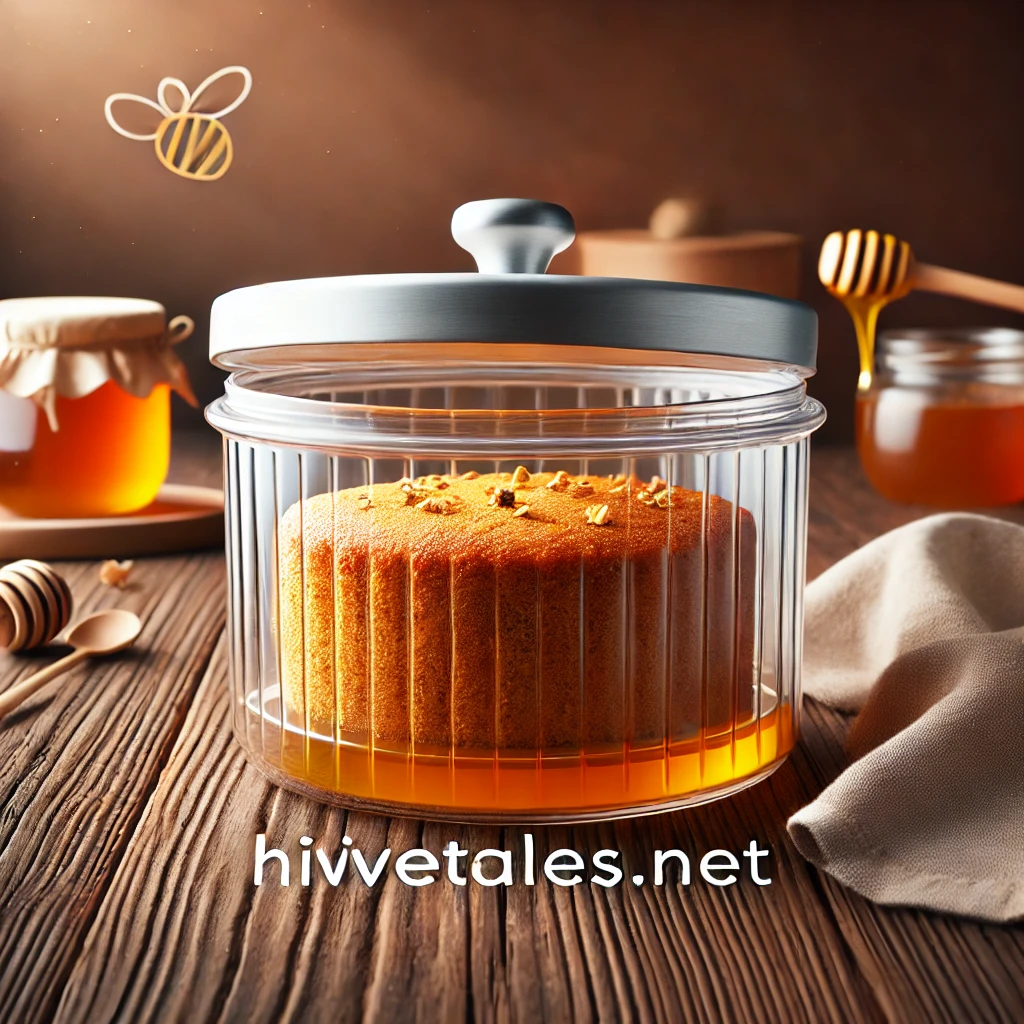
Honey cakes are known for their moisture and longevity, but the way you store them can make a big difference.
- Room Temperature: Wrap the cake in plastic wrap or store it in an airtight container at room temperature. It should stay fresh for up to 4 days.
- Refrigeration: If you want to keep it longer, store the cake in the fridge, wrapped tightly. It will last up to a week but may lose some of its softness. Bring it to room temperature before serving to restore the texture.
Quick Tip: Because honey is a natural preservative, it helps keep the cake moist and fresh longer than regular sugar-based cakes.
Freezing Honey Cake for Future Enjoyment
If you want to make your honey cake ahead of time, freezing is a great option. Here’s the best way to do it:
- Allow the cake to cool completely after baking.
- Wrap it tightly in plastic wrap, then in aluminum foil to prevent freezer burn.
- Label and freeze the cake for up to 3 months.
When you’re ready to serve, let the cake thaw at room temperature for a few hours. To restore a fresh-baked texture, warm it slightly in the oven at 300°F for about 10 minutes.
Serving Ideas: Toppings and Pairings
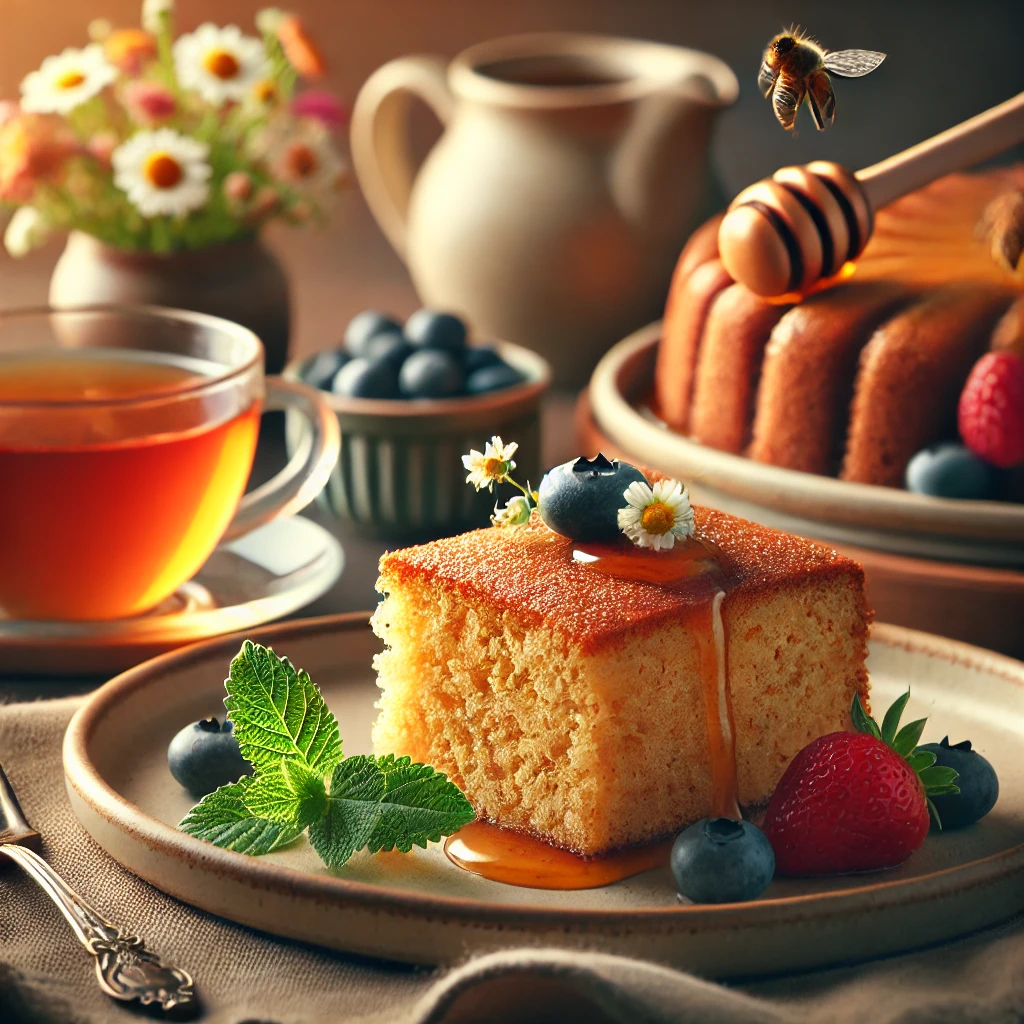
Honey cakes can be enjoyed on their own or dressed up with various toppings. Here are some popular ways to serve honey cake:
- Drizzled with Extra Honey: Enhance the flavor with a drizzle of honey just before serving. It adds a glossy finish and an extra layer of sweetness.
- With Fresh Fruit: Slices of apples, berries, or figs make a delicious and colorful addition.
- Paired with Tea or Coffee: Honey cake pairs wonderfully with herbal teas, especially chamomile or mint, or a cup of coffee for a cozy treat.
Recommended Pairing: Check out our Drinks with Honey article for more ideas on pairing beverages with your honey desserts!
Frequently Asked Questions about Honey Cake Storage and Shelf Life
Here’s a quick roundup of common questions readers have about storing and serving honey cake:
- How long does honey cake last? Properly stored, it can last 4 days at room temperature or up to a week in the fridge.
- Does honey cake get better with age? Some say honey cakes taste even better the day after baking, as flavors continue to meld.
- Can I freeze honey cake? Yes, honey cake freezes well for up to 3 months when wrapped properly.
Storing honey cake correctly helps preserve its flavor and texture, ensuring it’s just as tasty days later. Whether you’re saving it for a special occasion or enjoying it over a few days, these tips will help you make the most of every slice.
5. Frequently Asked Questions (FAQs) about Honey Cake
To wrap things up, here are answers to some of the most common questions about honey cake. These FAQs address everything from ingredient substitutions to troubleshooting tips, helping you master honey cake baking with confidence.
General Questions
- What makes honey cake different from regular cake? Honey cake stands out because of its natural sweetness, rich golden color, and unique depth of flavor. Unlike refined sugar, honey adds a moist texture and keeps the cake fresher for longer.
- Can I make honey cake with other sweeteners? Yes, but substituting honey with other sweeteners can change the flavor and texture. Maple syrup can be a close alternative but may affect moisture, so you might need to adjust the liquids in the recipe.
Ingredient and Technique Questions
- What type of honey is best for baking? Light honey (like clover) gives a mild flavor, while dark honey (like buckwheat) offers a bolder taste. Experiment to find the flavor you prefer.
- How can I make my honey cake more moist? Add a small amount of applesauce or yogurt to the batter, and avoid overbaking. Honey itself helps retain moisture, but these extra ingredients can give a softer texture.
- Can I make honey cake without eggs or dairy? Absolutely! You can replace eggs with unsweetened applesauce, flax eggs, or yogurt, while plant-based oils (like coconut or olive oil) work well instead of butter.
- What spices pair well with honey? Honey pairs wonderfully with cinnamon, ginger, nutmeg, and cloves. Add a touch of spice to your honey cake for a warm, cozy flavor, especially during fall and winter.
Decorating and Serving Tips
- What’s the best way to frost a honey cake? Light, fluffy frostings like whipped cream or cream cheese frosting work beautifully. For a simpler option, drizzle honey or sprinkle powdered sugar on top.
- Can I add nuts or fruit to my honey cake? Absolutely! Walnuts, almonds, or pecans make excellent additions. Dried fruits like apricots or figs add a chewy texture and natural sweetness that complements honey perfectly.
Troubleshooting Tips
- Why did my honey cake turn out dense? Overmixing the batter can make the cake dense, so mix only until ingredients are combined. Additionally, sift your dry ingredients to create a lighter batter.
- Why does my honey cake brown too quickly? Honey caramelizes faster than sugar, so try baking at a slightly lower temperature or tent the cake with foil if it’s browning too quickly on top.
Storage and Shelf Life FAQs
- How should I store honey cake? Wrap it in plastic wrap or keep it in an airtight container at room temperature for up to 4 days. For longer storage, refrigerate or freeze.
- Can honey cake be frozen? Yes! Freeze it tightly wrapped, and it will stay fresh for up to 3 months. Thaw at room temperature and enjoy as if it were freshly baked.
Quick Summary Table for Easy Reference
| Question | Quick Answer |
|---|---|
| Best honey for baking? | Light honey for mild, dark for bold flavors |
| Make cake egg-free? | Substitute with applesauce, yogurt, or flax eggs |
| Keep cake moist? | Add applesauce or yogurt; avoid overbaking |
| Store honey cake? | Airtight at room temp (4 days); freeze up to 3 months |
| Ideal frosting for honey cake? | Whipped cream or a honey drizzle |
This FAQ section aims to answer your most pressing questions, making your honey cake baking experience smoother and more enjoyable. Got more questions or ready to try a new recipe? Explore our Honey Desserts page for even more sweet inspiration!
Discover More Sweet Creations with Honey
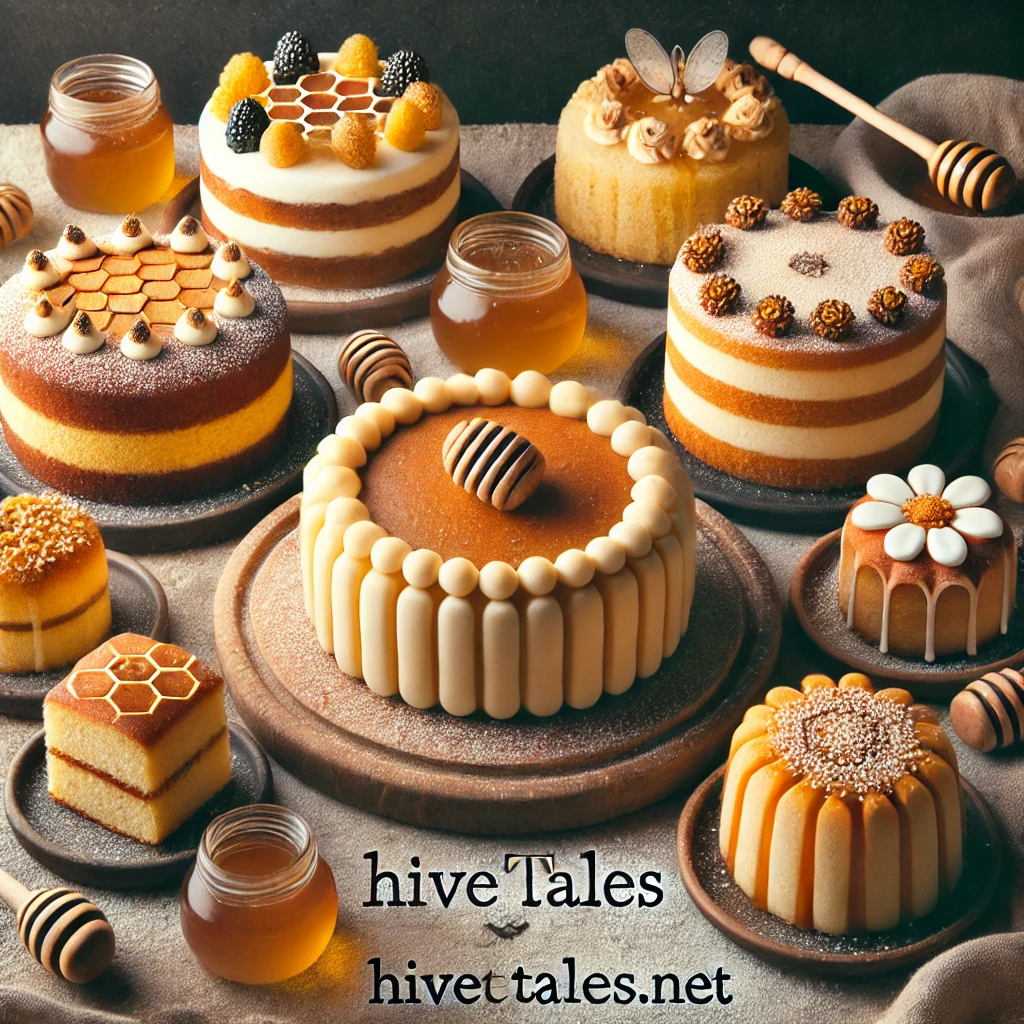
Now that you’re equipped with a variety of honey cake recipes, tips for baking, and storage advice, it’s time to put your skills to the test! Honey cakes offer so much versatility, from simple weekday treats to elegant celebration cakes. With their unique sweetness and natural goodness, honey cakes add a delightful twist to any occasion.
If you’re inspired by these honey cakes, why not try exploring other ways to enjoy honey in your cooking? Honey’s versatility goes beyond desserts; it’s also a great addition to drinks, savory dishes, and wellness routines.
Explore More on Hive Tales
- For a deeper dive into honey’s health benefits: Check out our article on Health Benefits of Honey to learn about how honey supports wellness and how it can be used in other recipes.
- Discover honey-infused beverages: Visit our Drinks with Honey page for delicious ideas on honey-based teas, lattes, and refreshing drinks that pair perfectly with your honey cakes.
- Try other honey-based dessert ideas: Explore our Honey Desserts section for even more recipes that showcase the natural sweetness of honey in creative ways.
Share Your Honey Cake Creations!
We’d love to see your honey cake creations! Whether you tried the classic recipe or experimented with unique flavors, share a photo with us on social media or leave a comment below to tell us how it went.
With honey as your baking partner, every recipe is an opportunity to bring warmth, flavor, and a touch of natural sweetness to the table. Ready to bake? Let’s get started, and don’t forget to explore more honey-inspired content on Hive Tales!
External References
- PaulRecipes – This site provides an insightful overview of honey’s health benefits, including its antimicrobial properties, nutrient content, and impact on blood sugar, making it a balanced choice as a natural sweetener in recipes. The article also covers potential health drawbacks of honey cake and ways to make it healthier, such as using whole grain flours or reducing added sugars.
- Bee Inspired Goods – Focused on baking with honey, this blog includes tips on using different honey varietals, adjusting oven temperature for optimal baking, and substituting honey for sugar. They also highlight local honey’s role in supporting bees and how it influences baked goods’ flavors, making it a valuable resource for honey cake techniques.
- Mindbodygreen – Known for health and wellness content, this blog examines the nutritional benefits of honey and its unique properties, such as lowering blood glucose and enhancing insulin sensitivity. It discusses honey’s glycemic advantages, antioxidants, and role in inflammation reduction, which are useful points for health-conscious readers exploring honey in baking.
- Dr. Berg – This blog provides an in-depth look at the health benefits of raw honey, including its antioxidant, antibacterial, and digestive benefits. The post explains the difference between raw and conventional honey, making it a helpful reference for readers interested in honey’s health-promoting properties.
- Natural Heart Doctor – This site covers honey’s cardiovascular benefits, including its potential to reduce inflammation, oxidative stress, and arterial plaque. The blog post also touches on honey’s impact on heart rhythm and cholesterol, which can appeal to readers focused on the health aspects of honey consumption.
- Chez Chaya – Known for its high-quality honey cake recipes, this lifestyle blog includes detailed, occasion-specific recipes, particularly for Rosh Hashanah. Their “Best Ever Honey Cake” is a rich recipe designed for holiday gatherings, making it a useful external link for readers looking for celebratory honey cake options.
